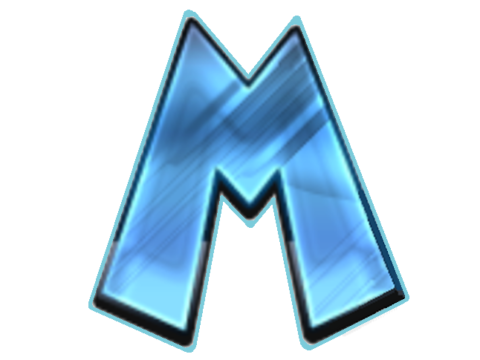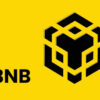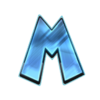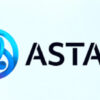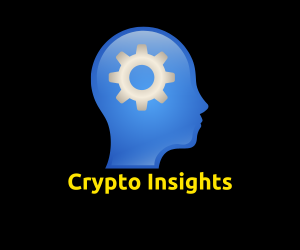
Polygon (formerly Matic Network) has become a leading solution for scaling Ethereum, offering innovative technologies that improve transaction speed and reduce costs. Two key components of Polygon’s scaling strategy are Plasma chains and Rollups, both of which play critical roles in expanding the capabilities of the Ethereum ecosystem. In this article, we will dive deep into Plasma chains and Rollups, exploring how they work, their advantages, and how they contribute to Polygon’s success in addressing Ethereum’s scalability challenges.
What is Polygon?
Polygon is a Layer 2 scaling solution for Ethereum that helps reduce the burden on Ethereum’s main chain by processing transactions off-chain. It’s designed to improve transaction throughput, lower gas fees, and enable seamless development of decentralized applications (dApps). With Polygon, developers can create scalable blockchain applications that maintain compatibility with Ethereum’s security and decentralization features.
What Are Plasma Chains?
Plasma is a framework that enables off-chain transactions, allowing Ethereum to process transactions faster and more efficiently by reducing the load on its main chain. Plasma chains are a form of Layer 2 scaling that operate by creating smaller, child chains connected to Ethereum’s main chain. These child chains can process a large volume of transactions off-chain and only settle the final state on Ethereum.
How Plasma Chains Work:
Plasma chains use a mechanism called fraud proofs to secure the network. In this system:
- Transactions occur off-chain on the child chains (Plasma chains).
- Only a small fraction of transactions are periodically submitted to the Ethereum mainnet as “state updates.”
- If any malicious activity occurs, users can submit fraud proofs to Ethereum’s mainnet, reverting the malicious transaction.
By processing most transactions off-chain, Plasma dramatically reduces the gas fees and allows Ethereum to scale.
Key Benefits of Plasma Chains:
- Scalability: Plasma chains can process thousands of transactions per second (TPS), far surpassing Ethereum’s native capacity.
- Cost-Effective: Because the majority of the transaction verification happens off-chain, gas fees are much lower than on Ethereum’s main chain.
- Security: Plasma inherits Ethereum’s security model. If fraud is detected, the fraud-proof mechanism ensures that malicious actors are punished, and the correct state is maintained.
Use Cases of Plasma Chains:
Plasma chains are ideal for microtransactions and applications requiring high transaction throughput. They are particularly suited for:
- Gaming: Where frequent, small transactions (like in-game purchases or rewards) need to be processed rapidly.
- DeFi Applications: That require high-speed trading or interactions without the burden of Ethereum’s high fees.
What Are Rollups?
While Plasma chains are designed for off-chain scalability, Rollups are another Layer 2 solution that helps improve Ethereum’s transaction capacity. Rollups batch multiple transactions into a single proof, which is then submitted to the Ethereum mainnet for verification.
There are two primary types of Rollups used by Polygon:
- Optimistic Rollups
- Zero-Knowledge (ZK) Rollups
Each of these Rollup technologies offers unique advantages in terms of speed, security, and efficiency.
1. Optimistic Rollups:
Optimistic Rollups assume that all transactions are valid unless proven otherwise. This optimistic assumption means they don’t need to compute every transaction in real-time, leading to faster and cheaper transactions. However, if someone suspects fraud, they can challenge the transaction using a fraud-proof mechanism.
How Optimistic Rollups Work:
- Users submit transactions off-chain, which are bundled together in a Rollup.
- The Rollup submits the transaction batch to Ethereum’s mainnet along with minimal data to verify its correctness.
- If someone detects a fraudulent transaction, they can submit a fraud proof to revert it.
Key Benefits of Optimistic Rollups:
- Scalability: They significantly increase Ethereum’s transaction throughput by processing transactions off-chain.
- Lower Fees: Gas fees are reduced since the Rollup only posts minimal data to Ethereum.
- Compatibility: Optimistic Rollups are fully compatible with Ethereum’s existing tools, smart contracts, and dApps.
Use Cases for Optimistic Rollups:
Optimistic Rollups are ideal for general-purpose dApps, particularly those that don’t require immediate finality, such as:
- DeFi applications: Platforms like Uniswap and Aave can benefit from the scalability and cost reduction of Optimistic Rollups.
- NFT Marketplaces: Rollups offer a scalable solution for NFT trading without the high costs associated with Ethereum.
2. Zero-Knowledge (ZK) Rollups:
ZK Rollups, on the other hand, use cryptographic proofs to verify the correctness of transactions. Unlike Optimistic Rollups, ZK Rollups generate a proof called a ZK-SNARK (Zero-Knowledge Succinct Non-Interactive Argument of Knowledge) for every batch of transactions, which is submitted to Ethereum for validation.
How ZK Rollups Work:
- Transactions are batched off-chain and a ZK-SNARK proof is generated.
- This proof is submitted to Ethereum’s mainnet, which verifies the proof without needing to process every individual transaction.
- ZK Rollups provide instant finality, meaning users don’t have to wait for a dispute period, unlike Optimistic Rollups.
Key Benefits of ZK Rollups:
- Instant Finality: Transactions are finalized immediately after the proof is verified.
- High Security: ZK Rollups are more secure because every batch is verified using cryptographic proofs.
- Cost Efficiency: By reducing the amount of data submitted to Ethereum, ZK Rollups lower gas fees.
Use Cases for ZK Rollups:
ZK Rollups are particularly useful in scenarios requiring immediate transaction finality and high security:
- Payment Networks: ZK Rollups enable fast, secure payment processing on Ethereum.
- High-Frequency Trading: In DeFi, where fast transaction finality is crucial, ZK Rollups can handle high-frequency trades with minimal fees.
Plasma Chains vs. Rollups: A Comparative Analysis
While both Plasma chains and Rollups are designed to scale Ethereum, there are key differences between the two.
1. Transaction Finality
- Plasma Chains: Transactions on Plasma chains aren’t finalized immediately. They depend on periodic state updates and fraud proofs.
- Rollups: Optimistic Rollups offer near-instant finality after the dispute period, while ZK Rollups provide immediate finality with cryptographic proofs.
2. Security Model
- Plasma Chains: Plasma relies on Ethereum’s main chain for security but uses a more complex fraud-proof mechanism to handle off-chain transactions.
- Rollups: Both Optimistic and ZK Rollups inherit Ethereum’s security model, but ZK Rollups are generally considered more secure due to the use of cryptographic proofs.
3. Scalability
- Plasma Chains: Plasma chains offer high scalability for specific use cases, especially microtransactions.
- Rollups: Rollups provide broader scalability, handling a wider variety of dApps, DeFi protocols, and transactions.
Conclusion: The Role of Plasma Chains and Rollups in Polygon’s Future
Polygon’s Plasma chains and Rollups represent powerful scaling solutions for Ethereum, each with its own strengths. Plasma chains are well-suited for high-throughput, low-cost applications, while Rollups (both Optimistic and ZK) offer more secure, general-purpose scalability. As Ethereum moves toward greater adoption, both Plasma and Rollups will continue to play pivotal roles in addressing the scalability challenge.
With Polygon leading the charge in Layer 2 innovations, it’s clear that Plasma chains and Rollups will remain essential components of the blockchain ecosystem, enabling faster, more cost-effective transactions without compromising on security.

